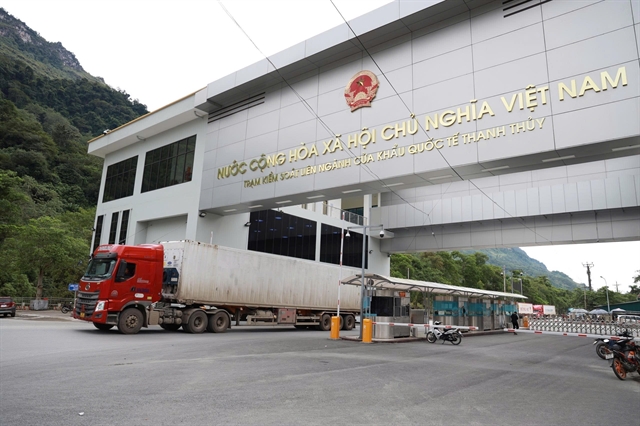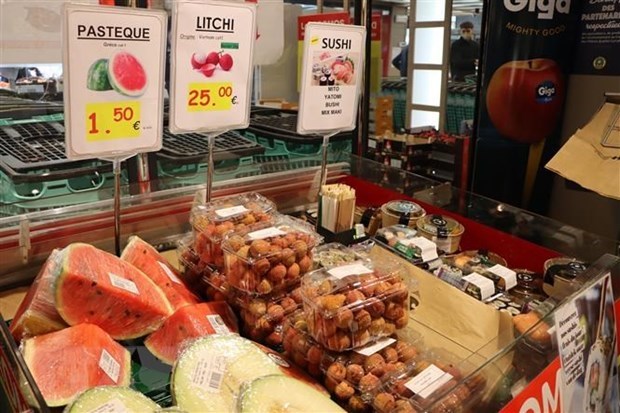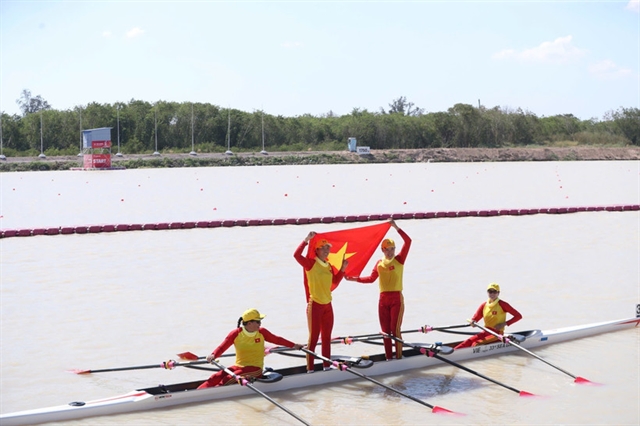 Economy
Economy


|
| Vietnamese lychee on sale at the Carrefour Tongres supermarket in Brussels capital of Belgium. VNA/VNS Photo |
HCM CITY — Europe may be a large market for Vietnamese goods, but businesses need to ensure quality standards and consumption trends to fully capitalise, a workshop has been told.
Nguyễn Tuấn, deputy director of the Investment and Trade Promotion Centre of HCM City, said trade between Việt Nam and Europe has recorded encouraging results in the recent past, and it is forecast to grow even more thanks to the EU-Việt Nam Free Trade Agreement (EVFTA).
Bilateral trade turnover saw a 12-fold increase from US$4.1 billion in 2000 to nearly $50 billion in 2020. Việt Nam’s exports to the EU surged by 13-fold from $2.8 billion to $35.1 billion during the period.
Last year, Việt Nam posted about $29 million in trade surplus with the EU despite the COVID-19 pandemic. The main importers of Vietnamese goods include Germany, France, and Poland.
Tuấn said as the pandemic is still wreaking havoc on the global economy and trade, Việt Nam, including HCM City, has been working hard to connect local enterprises with foreign markets via online platforms and new sales channels. As a result, trading has been maintained, keeping supply chains uninterrupted.
Adam Koulaksezian, director of the French Chamber of Commerce and Industry in Việt Nam (CCIFV), noted Việt Nam currently ranks 15th in the world and first in ASEAN among trade partners of the EU.
Thanks to the EVFTA that took effect in August 2020, tariff barriers have been lifted for a number of exports from both Việt Nam and the EU, creating momentum for bilateral trade. Export and import between the two sides have been on the rise and are predicted to grow further in the future, which will be a great opportunity for Vietnamese exporters in many industries, he said.
However, Koulaksezian added that EU consumers are paying more attention to sustainability, including origin traceability of products, corporate social responsibility, and environmental protection. Therefore, Vietnamese businesses should ensure the sustainability of their products and build an export strategy matching the demands and trends in foreign markets.
Pointing out certain challenges to bilateral trade, Business Support Service Director at CCIFV Nguyễn Đắc Bội Quỳnh said the complex COVID-19 situation, especially in southern Vietnam where many wood and aquatic product processing firms are located, is forcing businesses to implement social distancing but keep production going.
Other challenges include the requirements for product origin traceability and different types of certificates, and the fast-changing consumption trends in the EU.
Sharing her business’s experience, Phạm Thị Hồng Quang, director of the Việt Source Handicraft Co. Ltd, said the company has built its infrastructure meeting importers’ requirements, shifted to online marketing in the face of the pandemic, and stay updated with new consumption trends in the EU, which has helped its shipments to this market increase 20 per cent from the pre-pandemic period.
She recommended enterprises that want to access this market need to immediately meet quality requirements, update themselves with consumption trends, and make use of modern marketing channels. VNS




